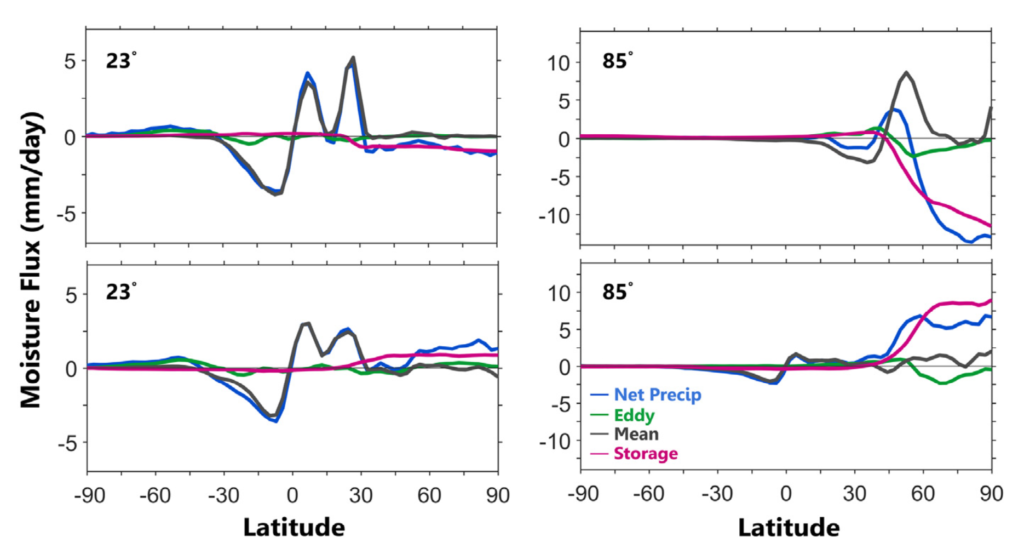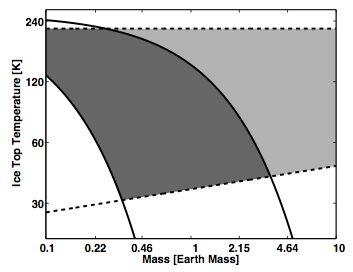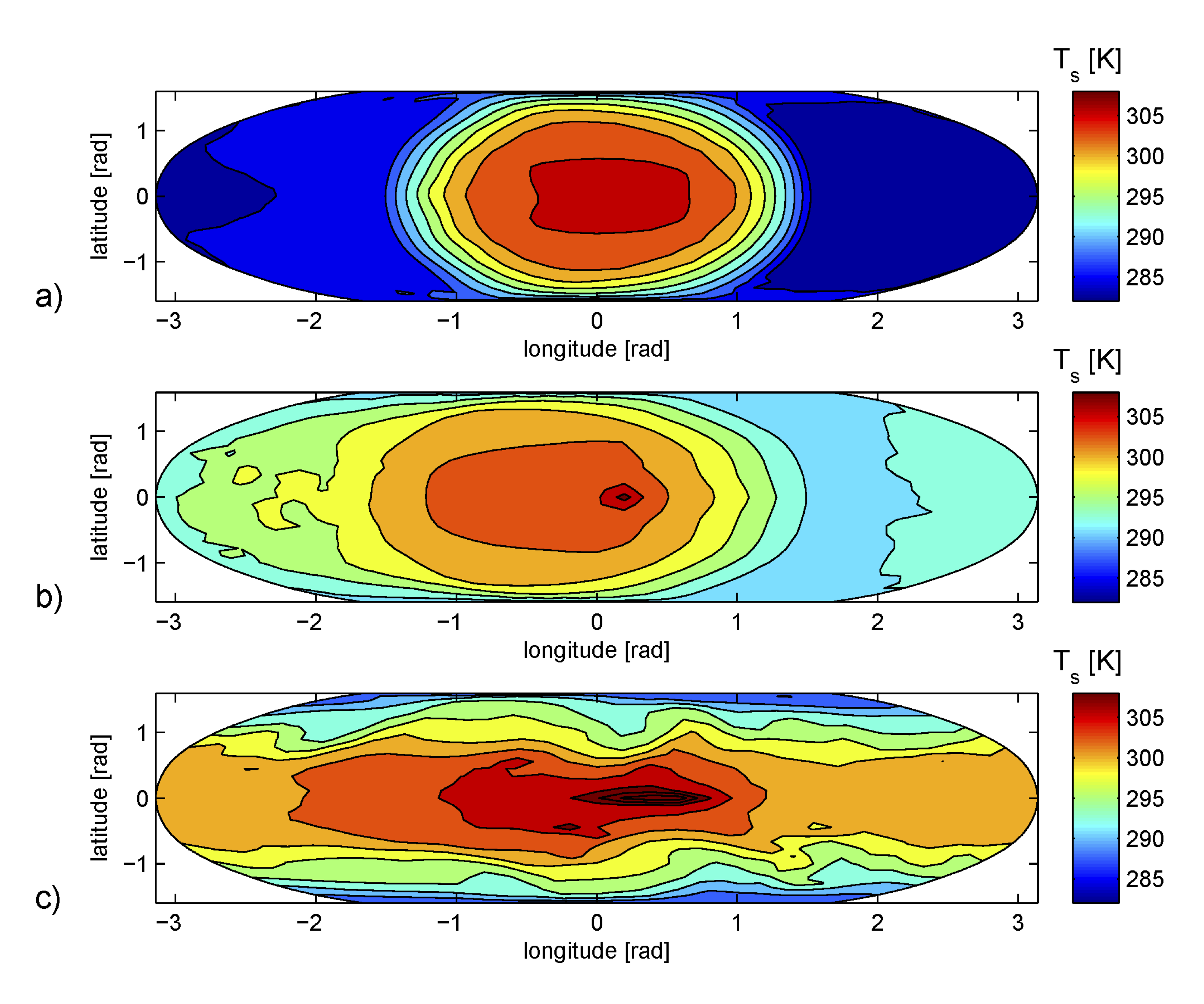Title: Atmospheric Dynamics in High Obliquity Planets
Authors: Ana H. Lobo and Simona Bordoni
First Author’s Institution: California Institute of Technology
Status: Published in Icarus [closed access]
Imagine a cross between Earth and Uranus—a planet with water and high insolation (sunlight) but tilted to Uranus’ crazy 98º. No planet like that exists in our solar system today, but one might have billions of years ago. Mars’ tilt varies wildly over millions of years and it is theorized that Mars once contained global oceans. The authors of today’s paper propose the fundamental question: would an earth-like, high obliquity planet be habitable?
Look to the GCM
To answer this question, the researchers use a general circulation model (GCM). A GCM is an advanced simulation that solves the fluid equations for a planetary atmosphere. It takes into account multiple factors, such as land-air boundaries, cloud formation, seasonal variability, and atmospheric chemistry. The authors choose to model a planet like Earth but with a “slab ocean” of a universal depth of 1 meter around the whole planet instead of the Earth’s true topography. Such a configuration is called an “aquaplanet” and has the benefit of isolating the effects of obliquity on the atmosphere from other potential factors. The models were run with obliquities varying from 10º to 85º.
Hot Summers and Cold Winters

In contrast to the Earth, on a planet with greater than 54º obliquity, the poles receive more sunlight on average than the equator. This results in strong heating of the poles during the summer and rapid cooling during winter, which can be seen in Figure 1. In a 23.5º tilt planet (top panel), the mid-latitudes see mild winters and summers. However, an 85º tilt planet (bottom panel) heats up about 20 K more in the summer and cools down 20 K more in the winter. An average temperature difference of 20 K may not seem like much, yet it’s the difference between Miami in July and the North Pole.
Monsoon Season
Extreme obliquity has a profound impact on precipitation.
The heat of Earth’s equatorial region is transferred toward the poles via Hadley Cells.
Rising air near the equator brings moisture with it, keeping the equator humid.
Falling air around 30ºN and 30ºS dries out those regions, which is why most of Earth’s deserts
can be found there.
The authors notice that as they increase obliquity to 85º, the equator becomes dry instead of tropical and the higher latitudes become extremely wet. Figure 2 shows the precipitation that falls in a planet with a 23.5º tilt (left panel) compared to that of an 85º tilt planet (right panel). The tropical bands of moisture move much farther north and south for the 85º tilt, creating a monsoon-like climate in the mid-latitudes even more extreme than the climate pattern in Southeast Asia, for example.

The middle panel shows annual mean precipitation (solid lines) and evaporation (dashed lines). The difference determines the atmospheric moisture. The average patterns on a 23.5º planet are nearly reversed on an 85º planet, causing desertification of the equatorial region and shifts in moisture. The principal reason for this precipitation pattern is changes in the atmospheric storage capacity.
Storage Wars
Three primary factors contribute to atmospheric moisture. (1) Mean moisture flux is the transport of water vapor by converging winds. For example, on Earth, the winds between 30º N and 30º S (from the Hadley Cells) blow toward the equator, pushing water vapor in the same direction. (2) Eddy transport is due to local winds. (3) Water vapor storage is the amount of water that can be held in the air without condensing out into clouds or rain and generally increases with temperature.
Figure 3 compares these three factors. For a 23.5º tilt planet (left panels), most of the net precipitation is caused by mean moisture flux near the equator. In contrast, the 85º planet (right panels) has intense precipitation due to the changes in storage capacity. This difference fits to what was shown in Figure 1: high obliquity planets have much more extreme temperature swings. When the 85º planet heats up in the northern summer, its storage capacity goes way up and the atmosphere fills with water. But winter on that planet comes on quickly, unlike the gradual seasons on Earth, and the sudden temperature drop plummets the atmospheric storage capacity, causing all that water to precipitate out.

These variations add up to substantially different moisture control systems on planets with different obliquities.
So…is it Habitable?
Though high obliquity planets with global monsoon seasons and temperature extremes may not seem like home to us, the authors of today’s paper have shown that some regions might still be habitable. It just would be in different places than on Earth. Running a more realistic model with deep oceans instead of an aquaplanet would likely improve habitability because water dampens temperature extremes. In the never-ending search for extraterrestrial life, exoplanet astronomers should not rule out extremely tilted planets.
Cover Image: Tech Insider




